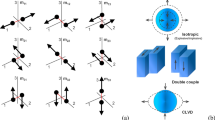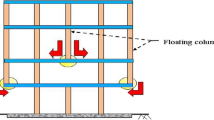Abstract
To estimate the demand of structures, investigating the correlation between engineering demand parameters and intensity measures (IMs) is of prime importance in performance-based earthquake engineering. In the present paper, the efficiency and sufficiency of some IMs for evaluating the seismic response of buried steel pipelines are investigated. Six buried pipe models with different diameter to thickness and burial depth to diameter ratios, and different soil properties are subjected to an ensemble of 30 far-field earthquake ground motion records. The records are scaled to several intensity levels and a number of incremental dynamic analyses are performed. The approach used in the analyses is finite element modeling. Pipes are modeled using shell elements while equivalent springs and dashpots are used for modeling the soil. Several ground motion intensity measures are used to investigate their efficiency and sufficiency in assessing the seismic demand and capacity of the buried steel pipelines in terms of engineering demand parameter measured by the peak axial compressive strain at the critical section of the pipe. Using the regression analysis, efficient and sufficient IMs are proposed for two groups of buried pipelines separately. The first one is a group of pipes buried in soils with low stiffness and the second one is those buried in soils with higher stiffness. It is concluded that for the first group of pipes, \(\sqrt {{\text{VSI}}[\upomega_{1} ({\text{PGD}} + {\text{RMS}}_{\text{d}} )]}\) followed by root mean square of displacement (RMSd) are the optimal IMs based on both efficiency and sufficiency; and for the second group, the only optimal IM is PGD2/RMSd.












Similar content being viewed by others
References
Alfredo HS, Wilson H (1975) Probability concepts in engineering planning and design. Wily, New York
American Lifelines Alliance (2001) Guidelines for the design of buried steel pipe. American Society of Civil Engineers
Baker JW, Cornell CA (2005) A vector-valued ground motion intensity measure consisting of spectral acceleration and epsilon. Earthq Eng Struct Dyn 34:1193–1217
Benito B, Herraiz M (1997) An approach to the measurement of the potential structural damage of earthquake ground motions. Earthq Eng Struct Dyn 26:79–92
Bradley BA, Cubrinovski M, Dhakal RP, MacRae GA (2009) Intensity measures for the seismic response of pile foundations. Soil Dyn Earthq Eng 29:1046–1058
Cordova PP, Deierlein GG, Mehanny SS, Cornell CA (2000) Development of a two-parameter seismic intensity measure and probabilistic assessment procedure. In: The Second US-Japan Workshop on Performance-Based Earthquake Engineering Methodology for Reinforced Concrete Building Structures, pp 187–206, 11–13 September, Sapporo, Japan
Cornell CA, Krawinkler H (2000) Progress and challenges in seismic performance assessment. PEER Center News 3:1–3
Cornell CA, Jalayer F, Hamburger RO, Foutch DA (2002) Probabilistic basis for 2000 SAC federal emergency management agency steel moment frame guidelines. J Struct Eng 128:526–533
Elenas A (2000) Correlation between seismic acceleration parameters and overall structural damage indices of buildings. Soil Dyn Earthq Eng 20:93–100
Giovenale P, Cornell CA, Esteva L (2004) Comparing the adequacy of alternative ground motion intensity measures for the estimation of structural responses. Earthq Eng Struct Dyn 33:951–979
Hindy A, Novak M (1979) Earthquake response of underground pipelines. Earthq Eng Struct Dyn 7:451–476
Kostinakis K, Athanatopoulou A, Morfidis K (2015) Correlation between ground motion intensity measures and seismic damage of 3D R/C buildings. Eng Struct 82:151–167
Krawinkler H (2002) A general approach to seismic performance assessment. In: Proceedings, international conference on advances and new challenges in earthquake engineering research, Hong Kong, pp 173–180
Liu A-w Hu, Y-x Zhao F-x, X-j Li, Takada S, Zhao L (2004) An equivalent-boundary method for the shell analysis of buried pipelines under fault movement. Acta Seismol Sin 17:150–156
Luco N (2002) Probabilistic seismic demand analysis, SMRF connection fractures, and near-source effects. In: Ph.D. Thesis, Stanford University
Luco N, Cornell CA (2007) Structure-specific scalar intensity measures for near-source and ordinary earthquake ground motions. Earthq Spectra 23:357–392
Mackie K, Stojadinovic B (2003) Seismic demands for performance-based design of bridges. In: PEER Report 2003/16, University of California, Berkeley, CA
Mollaioli F, Lucchini A, Cheng Y, Monti G (2013) Intensity measures for the seismic response prediction of base-isolated buildings. Bull Earthq Eng 11:1841–1866
O’Rourke M (1995) Seismic behavior of buried pipeline components: a state-of-the-art review. In: Proceedings, 10th European conference on earthquake engineering, Vienna, Austria, pp 2153–2162
Padgett JE, DesRoches R (2008) Methodology for the development of analytical fragility curves for retrofitted bridges. Earthq Eng Struct Dyn 37:1157–1174
Pineda-Porras O, Najafi M (2010) Seismic damage estimation for buried pipelines: challenges after three decades of progress. J Pipeline Syst Eng Pract 1:19–24
Riddell R (2007) On ground motion intensity indices. Earthq Spectra 23:147–173
Schiff AJ (ed) (1991) Guide to post-earthquake investigation of lifelines. American Society of Civil Engineers, Technical Council on Lifeline Earthquake Engineering
Shome N, Cornell CA (1999) Probabilistic seismic demand analysis of nonlinear structures (Report No. RMS35), Ph.D. Thesis, Stanford University, California
Shome N, Cornell CA, Bazzurro P, Carballo JE (1998) Earthquakes, records, and nonlinear responses. Earthq Spectra 14:469–500
Vamvatsikos D, Cornell CA (2002) Incremental dynamic analysis. Earthq Eng Struct Dyn 31:491–514
Vamvatsikos D, Cornell CA (2005) Developing efficient scalar and vector intensity measures for IDA capacity estimation by incorporating elastic spectral shape information. Earthq Eng Struct Dyn 34:1573–1600
Yang D, Pan J, Li G (2009) Non-structure-specific intensity measure parameters and characteristic period of near-fault ground motions. Earthqu Eng Struct Dyn 38:1257–1280
Yun H, Kyriakides S (1985) Model for beam-mode buckling of buried pipelines. J Eng Mech 111:235–253
Author information
Authors and Affiliations
Corresponding author
Ethics declarations
Conflict of interest
The authors declare that they have no conflict of interest.
Rights and permissions
About this article
Cite this article
Shakib, H., Jahangiri, V. Intensity measures for the assessment of the seismic response of buried steel pipelines. Bull Earthquake Eng 14, 1265–1284 (2016). https://doi.org/10.1007/s10518-015-9863-6
Received:
Accepted:
Published:
Issue Date:
DOI: https://doi.org/10.1007/s10518-015-9863-6




